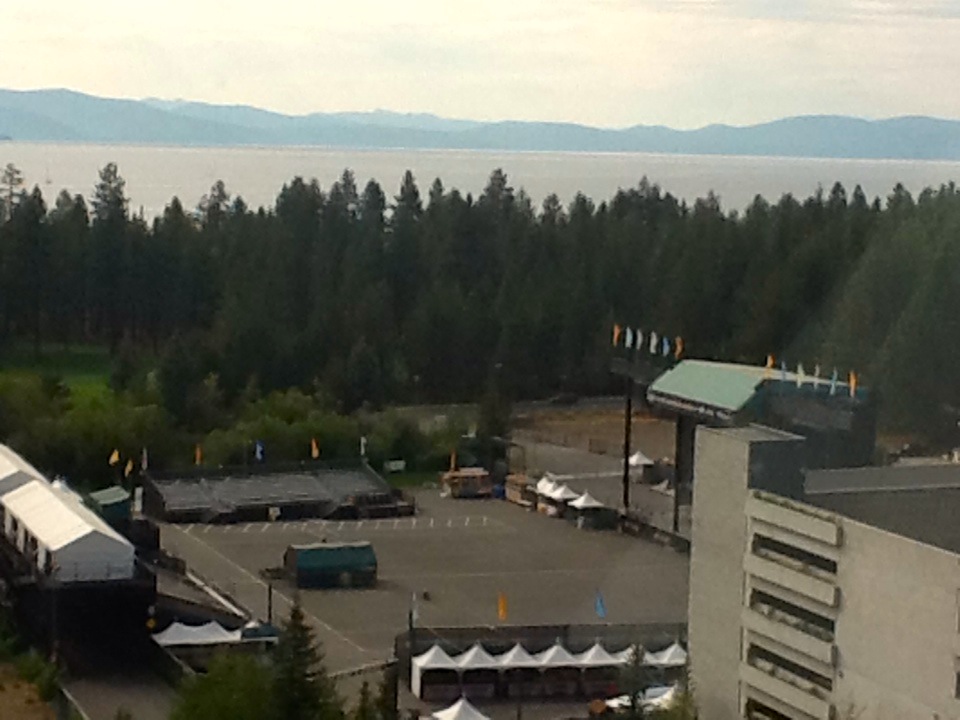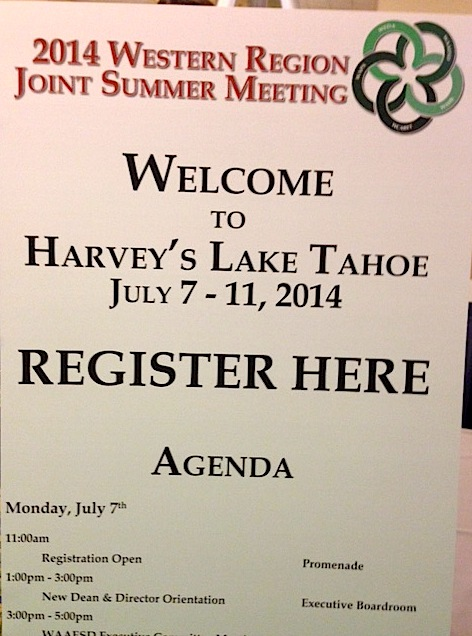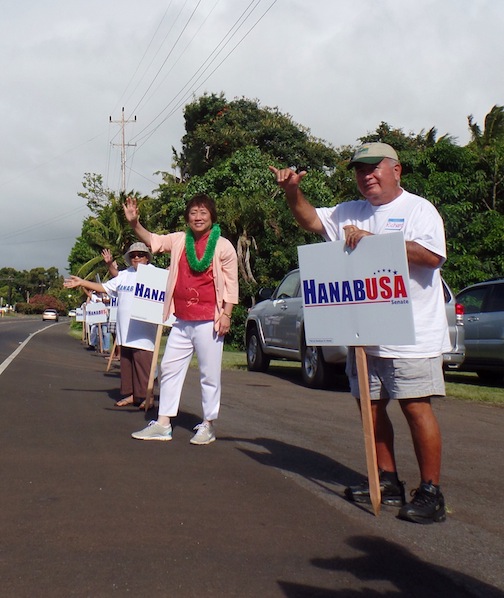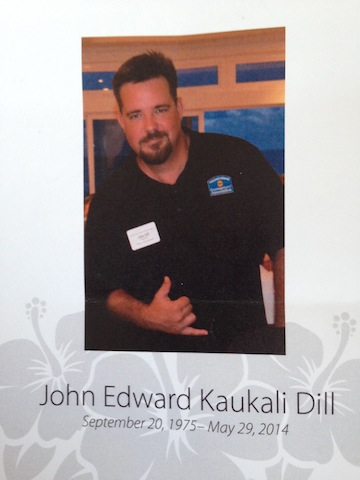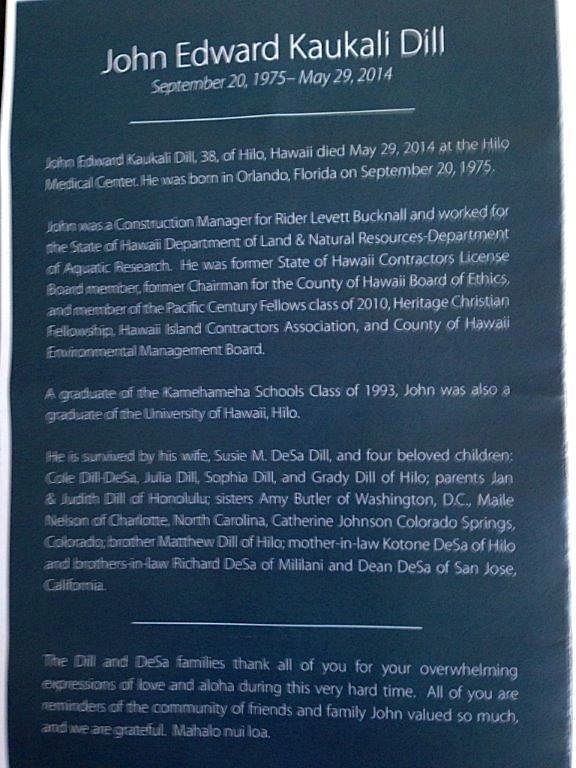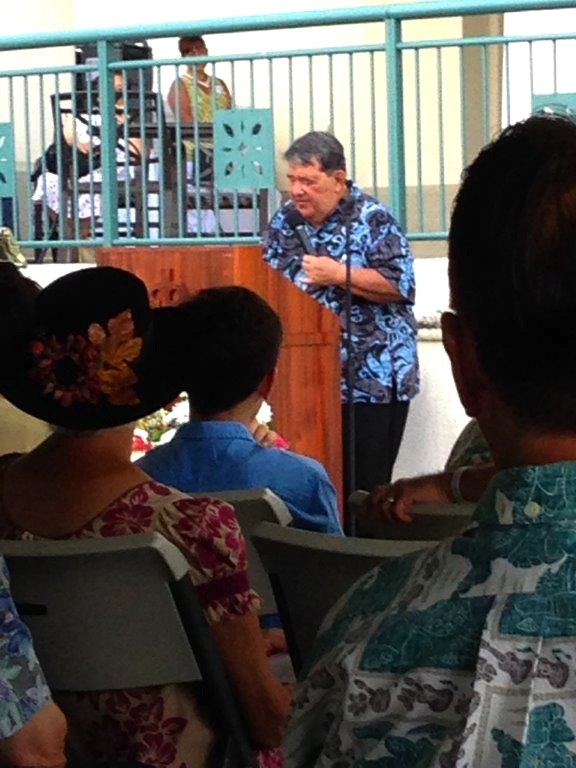Richard Ha writes:
The Office of Hawaiian Affairs trustees decided against filing a contested case hearing about the Thirty Meter Telescope.
Five of us flew over from the Big Island to testify at the OHA meeting. We were all concerned about the possibility of losing the education and employment opportunities that the TMT will bring to future generations.
I was very impressed at the power of the testimony of the group from the Big Island. Wally, Nani, Herring and Bill’s testimony was eloquent, from the heart, powerful, and simple. I was very proud to be a part of this group of strong, community-minded people.
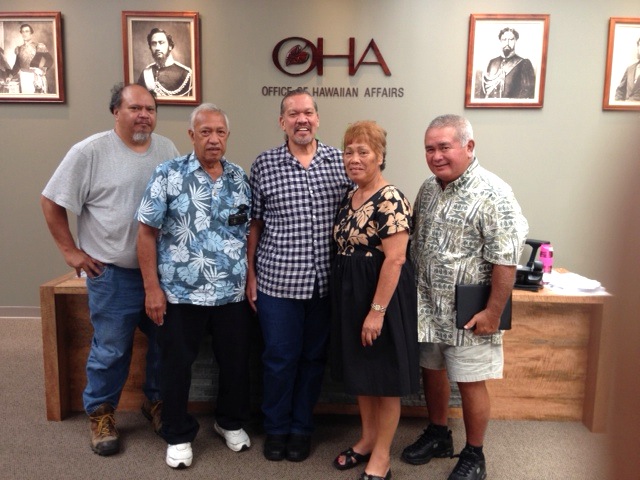
Left to right: Bill Brown, Herring Kalua, Wallace Ishibashi, Nani Kahea, and myself
After we testified, the OHA Trustees went into deliberations, and a few hours later we received word that the Trustees decided not to file a request for a contested case hearing.
Here is the testimony I gave:
Aloha trustees.
Please do not initiate a contested case hearing. Several things happened recently that could have a strong bearing on your decision.
My name is Richard Ha. I am a farmer on the Big Island and our family and our workers have produced more than a hundred million pounds of fruits and vegetables over the last 35 years. My family is Kamahele from lower Puna.
I was the only person from Hawai‘i to have attended five Association for the Study of Peak Oil (ASPO) conferences. I went because I wanted to learn about oil and how we could adapt to a world of rising oil costs.
Albert Bartlett, a professor of physics and a member of ASPO, said the greatest failing of humankind is its inability to understand the exponential function.
If someone stood in the middle of Yankee Stadium at 12:00 noon with an eye dropper, and started a drop of water and doubled it every minute and you were handcuffed to a chair at the top, how many minutes woukd you have to escape? The answer is 50 minutes. At what time would the stadium still be 93 percent empty? 12:45! At that point, the water would only be 5 feet high and hardly anyone would be aware that there was a serious problem ahead in just five minutes. That is the nature of compound growth.
Several weeks ago, the Energy Information Agency, the government agency that keeps track of energy information, said the Monterey Shale, consisting of two-thirds of the nation's oil reserves, was downgraded to just four percent of its previous estimation. The nation's total oil reserve supply before the announcement was estimated to be 100 years. This means that our oil reserves is estimated to last somewhere around 34 years, and only if the price is high enough can we get all of it. So, if oil supply is limited, the price will eventually rise.
The problem is that at $150 per barrel oil, our tourism industry will be hit hard. At $200 per barrel oil, an IMF economic team modeling that situation could not model any further because they were in uncharted waters. I heard the team leader, Michael Kumhoff say at the last ASPO conference that the results would be utterly improbable. Utterly improbable??? Scary words coming from an economist.
My good friend Robert Rapier, a well-respected chemical engineer who has been on 60 Minutes and many news and magazines, gave his take on British Petroleum's recent annual report. He basically said that if it wasn't for the shale oil and gas boom in the U.S., the world would already be going down the backside of the oil supply curve. And if not for that, we could already have been seeing $150 to $200 per barrel oil. That was just last week!
Will the shale gas and oil boom last? In the data from 19,000 oil and gas wells, we see that the average shale oil and gas well lasts only five years. Clearly that is not sustainable. In contrast, the Saudi old oil finds have lasted for more than 50 years. Things have clearly changed.
So, what happens if China, India and other countries start to become worried that we have economic trouble ahead? The Chinese know that you cannot be king if you cannot feed the people. Would they cut funding for the TMT? There is a strong possibility they and other countries would. The TMT represents money going out and no money coming in.
I was on the TMT subcommittee of the Hawaii Island Economic Development Board, so I was involved from the start. I volunteered because I was determined that if it was going to be done, it should be done right. Henry Yang, the new president of the TMT, was a good guy that you could do business on a handshake. He flew in to the Big Island 15 times and never talked to the press. He met with the people on the ground. The last trip he asked me where they should go since they had a couple of hours. I suggested we go to Kupuna Day at Keaukaha. When we got there, the people were so used to him and Jean Lou Chameau, president of Cal Tech, visiting them, they just said, Come, come, come, go eat, where you guys going?
From meeting with the people, Henry Yang came to find out that the lowest common denominator that folks on all sides of the issue could agree ok was Keiki education. That is how the THINK $1 million annual education fund was born.
One of the most important principles I learned came from Kumu Lehua Veincent, former principal of Keaukaha Elementary school. When I first got involved, I suggested to him that we could ask the TMT folks to give his students five full-ride scholarships to the best schools in the nation. He thought about it a few minutes and then he said these profound words. He said simply: "What about the rest?"
And that is what this decision is all about. What about the rest?
Aloha


